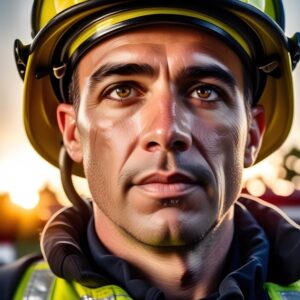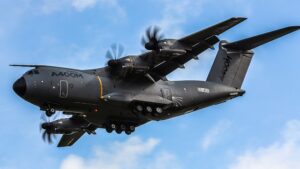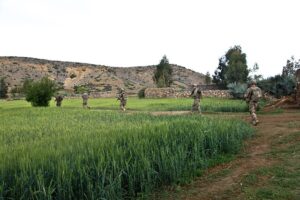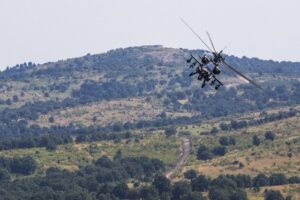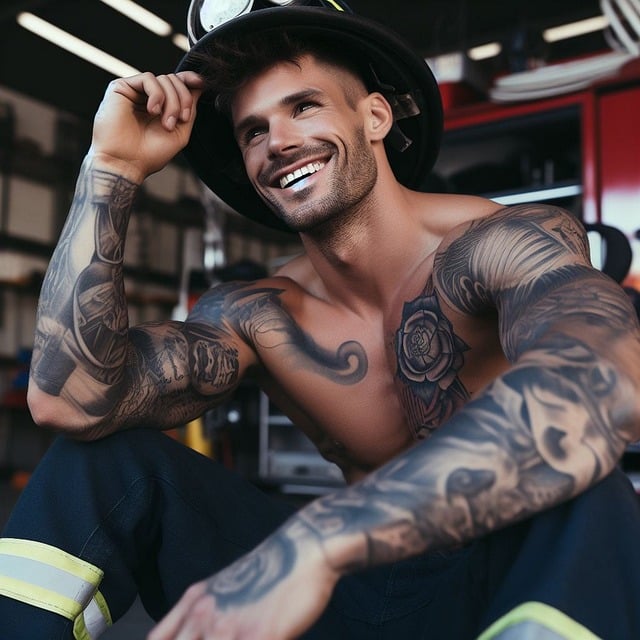
When every second counts for firefighters, their gear must not only endure intense heat and thick smoke but also withstand the rigors of rugged environments. This article delves into the critical features of impact-resistant flashlights specifically designed for firefighting operations. We explore material robustness, lumen ratings, battery longevity, ergonomic design, and waterproof integrity that collectively define the best flashlights for firefighters. These indispensable tools are not just illuminators but beacons of safety and clarity amidst chaos. Understanding their impact on firefighting efficacy is paramount for those who serve in these perilous conditions.
- Understanding the Demands on Flashlights for Firefighters
- Key Features of Impact-Resistant Flashlights Suitable for Firefighting Operations
- Materials and Durability: What Makes a Flashlight Tough Enough for Firefighters?
- Illumination Power: Lumen Ratings and Light Beam Characteristics for Optimal Visibility
- Battery Life and Power Management in High-Stress Environments
- Design Considerations for Ergonomics and Ease of Use Under Pressure
- Waterproofing and Dust Ingress Protection (IP) Ratings: Ensuring Reliability in All Weather Conditions
Understanding the Demands on Flashlights for Firefighters
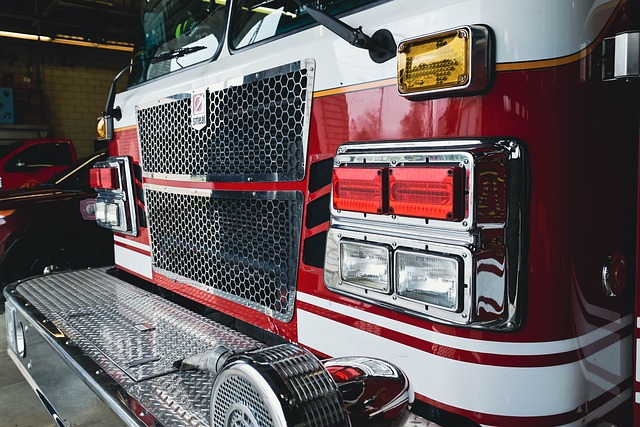
Flashlights designed for firefighters are engineered to withstand some of the most demanding environments and conditions. These robust lighting tools are subject to extreme temperatures, exposure to water, dust, and debris, as well as potential impact from falls or collision within a fire scene. The durability of these flashlights is paramount, as they serve as critical instruments for navigating through smoke-filled rooms, searching for victims, and performing tasks that require both hands. Impact-resistant construction is essential to ensure the flashlight remains operational even after accidental drops from heights or being struck against hard surfaces during a firefighting operation. The best flashlights for firefighters are equipped with high-strength materials like aircraft-grade aluminum and rubber overmolding on crucial points to absorb shock and prevent damage. They also feature a sealant design that protects the internal components from water and dust infiltration, which could compromise their functionality when most needed. Additionally, these flashlights are often equipped with LED technology, which provides a long-lasting and reliable light source. The combination of high-impact resilience, superior sealing against environmental hazards, and efficient lighting technology makes flashlights for firefighters an indispensable tool in the arsenal of fire rescue units worldwide.
Key Features of Impact-Resistant Flashlights Suitable for Firefighting Operations

When selecting a flashlight for firefighting operations, durability and impact resistance are paramount due to the demanding environments that firefighters operate in. Flashlights for firefighters must be constructed with high-impact materials such as aircraft-grade aluminum or reinforced polymer to withstand the rigors of the job. These flashlights are designed to function reliably even after being dropped or exposed to extreme conditions. The impact resistance is often tested to meet high standards, ensuring that the beam remains unobstructed and the device operational when it’s needed most. Additionally, firefighters require a flashlight with a robust build that can endure smoke, water, and dust without failure.
A key feature of impact-resistant flashlights suitable for firefighting is their ability to operate in a wide range of temperatures. Firefighters often work in extreme heat, so the best flashlights for this purpose are built to maintain their brightness output even under high ambient temperatures. Moreover, these flashlights must also perform reliably in cold environments, ensuring visibility during search and rescue operations in various conditions. Impact-resistant flashlights for firefighters typically feature shockproof LEDs that provide a consistent light output, which is crucial when every lumen counts. They also often come with additional features tailored to the needs of firefighting professionals, such as strobe functions for signaling and multiple brightness settings to conserve battery life when less illumination is required.
Materials and Durability: What Makes a Flashlight Tough Enough for Firefighters?
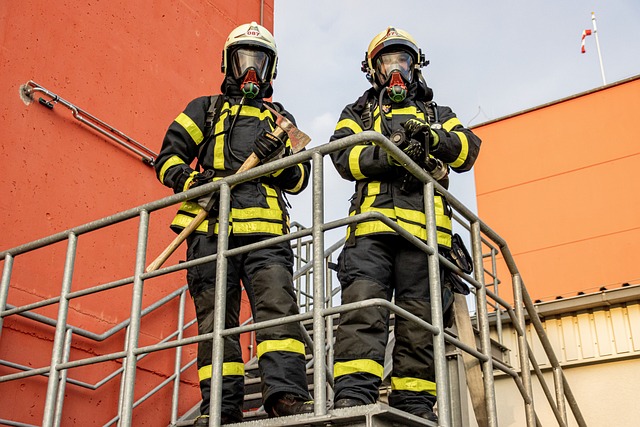
Flashlights designed for firefighters are engineered to withstand extreme conditions, making them a critical tool in high-stress environments. The durability of these flashlights is primarily attributed to their robust construction materials and advanced design features. A hard-anodized aluminum body is common; it offers a superior balance between weight and strength, ensuring the light can endure the rigors of firefighting without easily bending or denting. This material also provides excellent heat dissipation, which is crucial when the flashlight might be used for extended periods in intense heat or cold environments.
Furthermore, impact-resistant glass lenses or polycarbonate materials are used to protect the light’s bulb and ensure clarity even after exposure to harsh conditions. The bezel, which often houses the lens, is constructed with a material like polycarbonate as well, providing an additional layer of protection against drops and impacts that might otherwise compromise the device. Impact-resistant flashlights for firefighters are subjected to stringent testing to meet high standards, such as being dropped from significant heights onto hard surfaces without failure. Additionally, features like O-ring seals and waterproof construction ensure that these flashlights can perform reliably in wet conditions, which is a common scenario during firefighting operations. These combined elements of design and material selection make impact-resistant flashlights an indispensable tool for the demanding profession of firefighting.
Illumination Power: Lumen Ratings and Light Beam Characteristics for Optimal Visibility
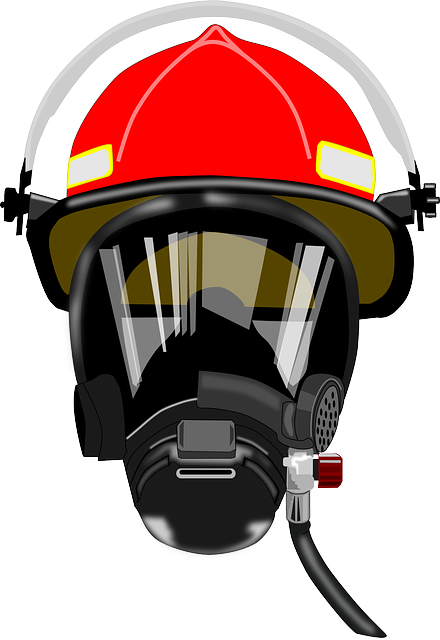
When firefighters enter smoke-filled environments, a reliable light source becomes a matter of life and death. High lumen ratings in impact-resistant flashlights are critical for optimal visibility in such conditions. Lumen ratings, which quantify the total amount of light produced by a flashlight, directly influence how well objects can be seen. For instance, a flashlight with a high lumen output can penetrate dense smoke or dark spaces, allowing firefighters to identify potential hazards quickly and accurately navigate through chaotic environments. Additionally, the beam characteristics, such as throw distance and spread, are crucial for task-specific applications within firefighting operations. A focused beam can illuminate distant areas, while a wider beam is beneficial for close-quarters work. Flashlights designed for firefighters often feature adjustable beam settings, offering both a floodlight effect for general area illumination and a spotlight effect for long-range visibility. These adaptive features ensure that firefighters have the necessary lighting tools to tackle various challenges they may face on the job. Impact resistance is another key aspect, as these flashlights must withstand the rigors of the job without failing, maintaining functionality even after being dropped or exposed to extreme conditions. Incorporating durable materials and robust construction, impact-resistant flashlights for firefighters are engineered to endure and provide consistent performance when it’s most needed.
Battery Life and Power Management in High-Stress Environments
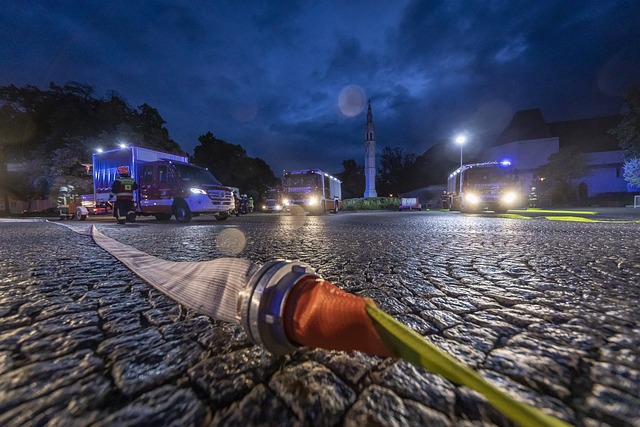
When firefighters enter high-stress environments, such as burning buildings or smoky rooms where visibility is already compromised, a reliable light source becomes an indispensable tool. Impact-resistant flashlights designed specifically for this profession are engineered to withstand the rigors of the job while ensuring optimal battery life and efficient power management. These flashlights typically feature high-efficiency LEDs that provide bright illumination without draining batteries rapidly. The LEDs’ longevity means firefighters can rely on a steady beam for extended operations, which is crucial when every second counts and the risk of being in complete darkness increases. Advanced power management systems within these flashlights help to prevent unnecessary energy use, extending their operational time under continuous use. This not only reduces the frequency of battery swaps but also ensures that the light remains available when it’s most needed. Features like low-battery indicators and energy-saving settings are standard, allowing firefighters to conserve power when full illumination is not required. The result is a flashlight that can endure the harsh conditions faced by first responders while providing the consistent, reliable light necessary for their critical work in high-stress situations.
Design Considerations for Ergonomics and Ease of Use Under Pressure

When designing impact-resistant flashlights specifically for firefighters, ergonomics and ease of use under pressure are paramount. The contours of a flashlight intended for this demographic must be intuitive to handle even when donned in bulky gear or when hands are slick with sweat or soot. A slip-resistant grip texture is essential to prevent the light from slipping out of grasp during strenuous activities. The switch mechanism should be easily operable, even with gloves on, allowing for quick activation and deactivation without fumbling. Its placement must be thoughtfully considered to avoid inadvertent activation while still being accessible amidst the chaos of a fire scene.
The interface design should prioritize simplicity to minimize cognitive load. Firefighters operate in high-stress environments where every second counts. A flashlight with multiple modes or settings could become a source of confusion under pressure, which is why a straightforward, reliable, and durable model is preferred. The beam intensity should be high enough to penetate thick smoke or darkness but not so blinding as to impede the user’s vision. Additionally, the flashlight should have a secure, non-intrusive attachment method for belt loops or harnesses, ensuring it stays firmly in place without interfering with other equipment. These design considerations are tailored to enhance the firefighters’ ability to navigate through smoke-filled rooms and unlit areas safely and efficiently, making flashlights for firefighters a critical tool in their arsenal.
Waterproofing and Dust Ingress Protection (IP) Ratings: Ensuring Reliability in All Weather Conditions
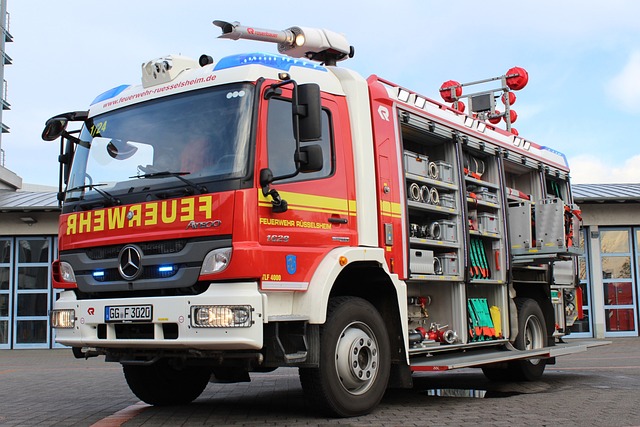
When firefighters enter smoke-filled buildings or navigate through outdoor emergencies, their tools must withstand harsh conditions without fail. Impact-resistant flashlights designed for such professionals are engineered to endure the rigors of their environment. Waterproofing is a critical feature in these flashlights, ensuring that they can operate even when submerged. This not only protects the internal components from water damage but also allows firefighters to use the lights in wet or hazardous environments without compromise. The Dust Ingress Protection (IP) ratings provide a standardized measure of a device’s ability to prevent intrusion from particles such as dust, which can disrupt functionality and cause performance issues over time. Flashlights for firefighters with high IP ratings are crucial for maintaining visibility in environments where dust is prevalent, ensuring that the light remains reliable whether it’s used indoors or outdoors. The combination of robust waterproofing and a high IP rating means these flashlights can provide consistent performance under all weather conditions, a testament to their durability and reliability—essential qualities for firefighters who depend on their gear in critical situations.
